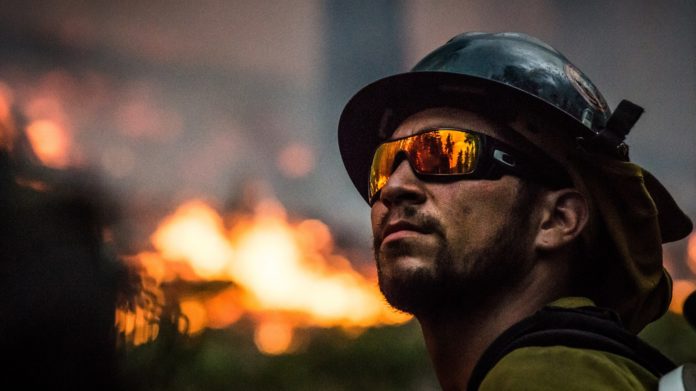This past summer saw British Columbia enter a prolonged state of emergency in what was the worst wildfire season on record for the province. Hundreds of fires ravaged the province’s forests and thousands of citizens were evacuated. Clearly, there is a pressing need for methods that can contain future wildfires before the damage gets out of hand.
To Mark Crowley, assistant professor in the Department of Electrical and Computer Engineering at the University of Waterloo, artificial intelligence is the answer.
Along with his student Sriram Ganapathi Subramanian, currently a PhD student at the University of Waterloo, Crowley noticed a problem with currently fire management practices.
These practices focus on “immediate suppression at the cost of increased future fire risk”, meaning that while the current fire will be put out quickly, future wildfires in the area will have access to the same dry fuels as previous fires. They will last longer, spread faster, and cause more damage in the long run.
When should we allow a fire to continue burning?
Letting wildfires run their course while limiting their spread requires smarter predictions and deployment of firefighting resources. As well, the decision about whether or not to allow a fire to continue consuming fuel needs to be made quickly. But these decisions are typically based off of slow, computationally-expensive computer simulations that may not be ready in time for the decision to be made.
To combat this, Subramanian and Crowley decided to investigate whether or not readily-available satellite images could be used to dynamically model the spread of a fire as it occurs, and calculate the best course of action for its containment. This would mean limiting reliance on slow computer simulations, allowing for a faster method of deciding how to react to forest fires.
Subramanian and Crowley’s research on the potential of artificial intelligence in forest fire management was published in Frontiers in ICT, and was also the subject of Subramanian’s master’s thesis.
Machine learning algorithms can make crucial decisions quickly
Subramanian and Crowley’s investigation involved using reinforcement learning, which is a machine learning function that allows a computer to learn about a problem by trial and error. It reinforces actions that produce a desirable outcome, and uses this information to eventually reach an optimal solution.
The wildfires were modelled as a spatially spreading process, or SSP. These are complex systems in which local features change over time, and changes in one location influence changes in another.
After training their algorithm on models of forest fires, Subramanian and Crowley turned to actual satellite images of massive wildfires in Northern Alberta: the Fort McMurray fire of 2016 and the Richardson fire of 2011. Their algorithm was successfully able to identify where fires were burning in a large number of cases, as well as predict where the fires were most likely to spread and occur in the future.
Emergency responders could use predictions like these during future wildfires to decide whether the best course of action was to put the fire out immediately or allow it to consume all the fuel in the area, preventing additional fires from igniting in the first place.
Going forward, Subramanian and Crowley hope to include information on firefighting intervention in their analysis. This includes firefighting strategy and the amount of time elapsed since the fire began. The two regions included in their original analysis had minimal to no firefighting, so these aspects were not accounted for.
They will also incorporate land characteristics such as moisture and slope to more accurately predict the behaviour of the fires.
Artificial intelligence is increasingly being applied to real-world problems like firefighting. Last year, a team of researchers from the University of Calgary used artificial intelligence to predict where lightning is most likely to affect fire-prone areas.
Together, solutions like Subramanian and Crowley’s as well as those from the University of Calgary are proof that sometimes, playing with fire leads to a reduced risk of getting burnt.




































